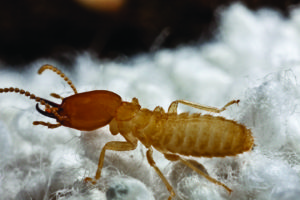What Is The Difference Between Lower And Higher Termites?
If you have ever experienced the horrors of a termite infestation, then you may have done your own research on termites in order to better understand the insects that were eating away at your home. Many academic articles concerning termites will refer to “higher” and “lower” termites. Unless a person is well educated in the field of biology or a related discipline, the distinction between lower and higher species may not be clear to many readers. Finding a definition for these two classifications can be difficult, as a Google search will not bring up a simple explanation for this distinction. However, most laymen will correctly assume that the distinction between higher and lower termites relates to the degree of evolutionary advancement achieved by a particular termite species. But what makes one termite species more evolved than another?
To put it simply, higher termites have undergone more evolutionary changes than lower termites. Lower termites are more closely related to the earliest termite species that existed on earth. In terms of behavior and anatomy, higher termites are more evolved than lower termites. Higher termites live within social structures that are more complicated and advanced than lower termite colonies. The nests built by higher termites are also more advanced than the nests built by lower termites. The most advanced type of termite nest is the mound that contains a complicated network of tunnels directly below its base.
Out of the seven termite families that exist, six of them are categorized as lower termites. Termitidae is the only family of termites that is considered to be of a higher order. A small amount of sources also consider the Serritermitidae family to represent a higher order of termites, but most experts agree that only one family of termites meet the conditions of a higher termite species. The termitidae family includes the majority of living termite species. Over seventy percent of all living termites belong to the termitidae family.
Higher termites are well known for possessing a greater diversity of gut bacteria. This change in the gut microbe community could explain the broader diets of higher termites. Lower termites can only feed on wood and grass, but higher termites can feed on soil and a wider range of plant matter. The difference between the gut microbiomes of higher and lower termites is currently a topic of ongoing study.
Have you ever wondered which termite species is the most evolutionarily advanced?
Tags: Termites



